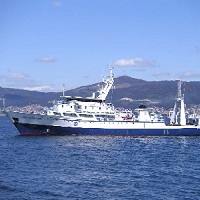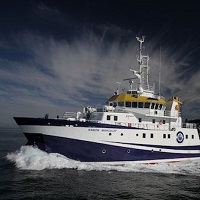Keyword
Primary production in the water column
49 record(s)
Type of resources
Categories
Topics
INSPIRE themes
Keywords
Contact for the resource
Provided by
Years
Formats
Status
-

Oceanographyc survey collected in the framework of theSTOCA and INGRES3 projects. STOCA is a program conducting systematic hydrographic and plankton observations along three standard sections in the eastern Gulf of Cadiz. INGRES3 is a Spanish Ministry for Science and innovation funded project that maintains a mooring line at the Spartel sill in the Strait of Gibraltar.
-

Cetaceans, Oceanography and biodiversity of the Deep Waters of El Hierro y La Palma islands
-

Prácticas dirigidas a los alumnos de las asignaturas Ecología Acuática y Biología Marina de la UIB, con el objetivo de trabajar in situ las principales técnicas oceanográficas para la adquisición de información de la columna de agua y la obtención de muestras de agua y organismos del plancton y del bentos.
-

Prácticas dirigidas a los alumnos de las asignaturas Ecología Acuática y Biología Marina de la UIB, con el objetivo de trabajar in situ las principales técnicas oceanográficas para la adquisición de información de la columna de agua y la obtención de muestras de agua y organismos del plancton y del bentos,visualización del fondo marino con ROV.
-
NA
-
Training of young oceanographers, using the Malaspina project methodologies.
-

Estimation of the spawning stock biomass of anchovy in the Gulf of Cadiz by the daily egg production method.
-

The goals of this campaign are framed within the objectives of the overall project 'Radial Profunda de Canarias', being the experimental cruise of the proposal. Thus, this cruise will help to: • Determine the structure of the current when it reaches the Canary Islands, of the Outcrop Current and the polar counterflow of slope in its passage through the Canary Archipelago and the African slope, stimating its mass transport, heat and nutrients. • Characterize the different modes of variability of heat and mass transport in easternorth atlantic subtropical gyre and the oucrop in northwest African coast. • Characterize the annual cycle in the physical conditions of the surface layers and mixture to where the seasonal cycle is significant, relating it to the meteorological forcings. • Characterization of changes in water masses, mainly in the North Atlantic Central Water (NACW), in Antarctic Atlantic Intermediate Water (AAIW) in Mediterranean Water (MW), bottom waters of the Canary Basin and the oucrop in northwest African coast, in based on temperature, salinity, nutrients and oxygen. • To characterize the zooplancton and micronecton deep communities. The main target of the "VULcanología CAnaria submariNA, VULCANA" project, is to study from a physicochemical, biological and geological point of view underwater volcanoes and hydrothermal systems active or not in the entire Canary basin. In addition, special attention will be given to the continuity of studies carried out in the Tagoro submarine volcano on the island of El Hierro, continuing like this, with one of the Longest physical-chemical-biological time series in the Spanish territory. The specific objectives of the Vulcana1119 campaign will be: 1. Continue with the physical-chemical monitoring studies of the only active underwater volcano in phase of degassing of the Spanish territory, Tagoro submarine volcano, on the island of El Hierro. 2. Determination of the speed of protein synthesis (estimate of production of new biomass) in planktonic microbial communities using the technique proposed by Smith and Azam in 1992.
-

The fertilization of phytoplankton by the Iberian upwelling is responsible for the production of ∼250,000 t year-1 of blue mussels in the Galician Rías. This amount represents 95% of the Spanish and 50% of the European production, respectively. This production is jeopardized every year by species from the genera Dinophysis and Pseudo-nitzschia, responsible for lengthy shellfish harvesting closures due to accumulation of diarrhetic (DSP) and amnesic (ASP) shellfish poisoning toxins, respectively, above regulatory levels. Previous studies in this region and others in Europe indicate that these species frequently aggregate forming “thin layers”. Less than five meters thick and up to several km in horizontal extension, these layers have important implications for the management of molluscan shellfish safety. Despite this, the frequency of occurrence of thin phytoplankton layers in the Galician Rías, and the role of mixing conditions in their formation and persistence remains unknown. This project combines field observations in the Galician Rías, time series analysis, and empirical and numerical modeling with the aim of 1) investigating the role of mixing on resource availability and phytoplankton bloom initiation, maintenance and dissipation, 2) describing the frequency and spatial distribution of thin layers of phytoplankton (TLP), and 3) investigating the mechanisms responsible for the formation of TLP.
-

Estimating the abundance and population structure of the target species of the trawl fishery in the Mediterranean, identified in the MEDITS project (Annex I), studying the biology of exploited communities on the shelf and upper slope of the study area and the impact of fishing on ecosystems.
 Catálogo de datos del IEO
Catálogo de datos del IEO